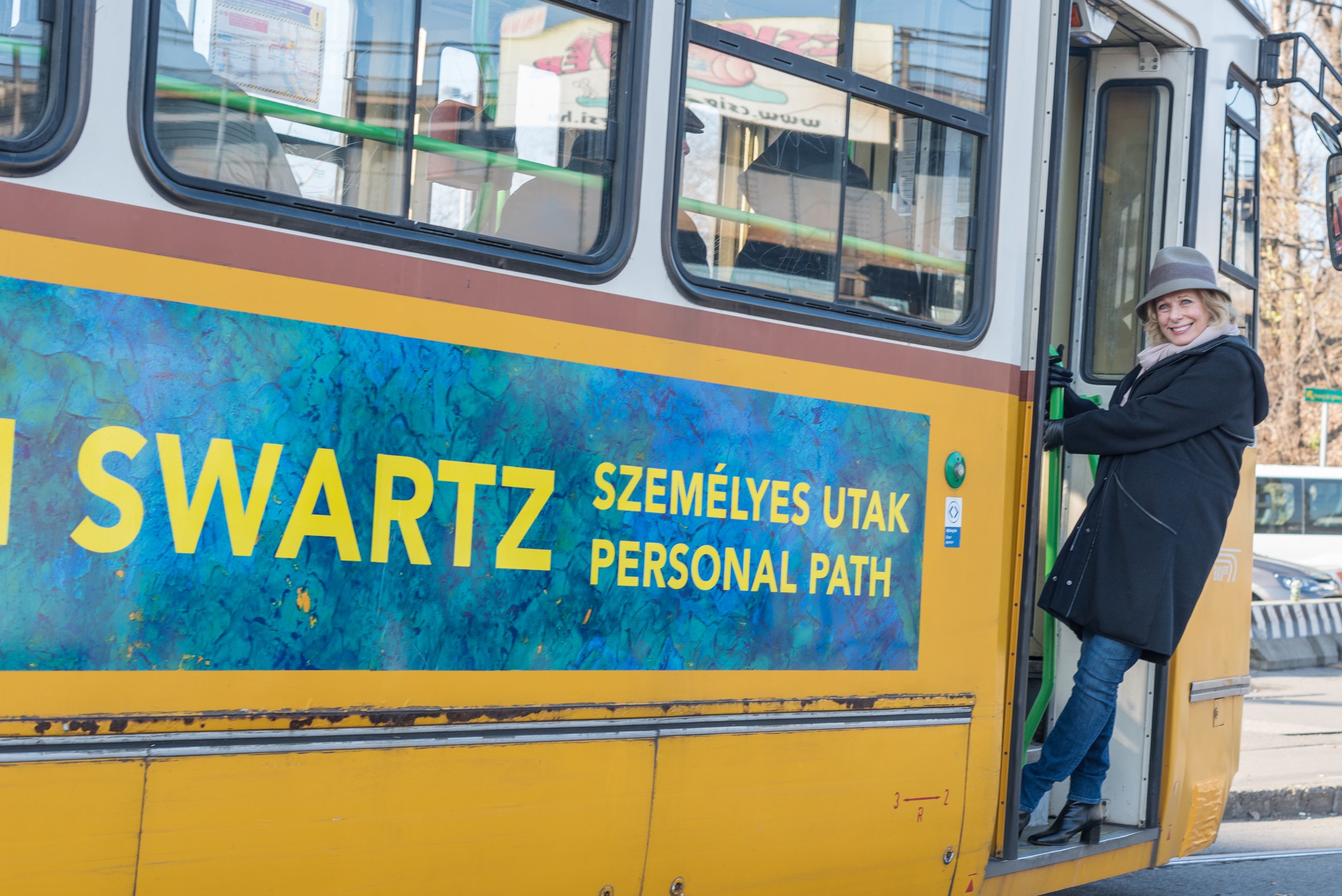Personal Path, Budapest
December 9, 2016 - January 29, 2017
Susan Swartz’s highly anticipated solo exhibition Personal Path opened at the Ludwig Museum in Budapest, Hungary on Friday, December 9th, 2016; a large crowd of collectors, politicians, museum directors, and art enthusiasts were in attendance. More than 100 paintings across nine rooms were on display. The show was met with much acclaim. Walter Smerling, the Director of the Foundation of Art and Culture in Bonn, Germany declared, “There’s never been a show like this.”
The opening ceremony included speeches by exhibition curator Professor Doctor Dieter Ronte; Ambassador Colleen Bell; Ludwig Museum Director Julia Fabenyi; Juergen Grossman, Honorary President of the Foundation of Arts and Culture, Bonn; Minister of Culture Zoltan Bolag; and the artist herself. The speakers spoke highly of Swartz’s work, focusing on the emotion of her pieces and her technique.
Walter Smerling, Susan Swartz, and Dr. Dieter Ronte.
Dr. Dieter Ronte, Curator, with Susan at the Ludwig Museum.
Susan speaking with press.
The monochrome paintings featured in the exhibition are comprised of intricate layers of colors that belie a complexity of artistry. Exhibition curator Professor Doctor Dieter Ronte elaborates on Swartz’s technique: “The question regarding the options inherent in a single colour is not answered with an expression of monochrome simplicity nor with painterly, self-referential theories, but with a rich abundance of colour.” The success of a monochrome painting is not dependent on a singular hue, but rather on the skillful manipulation of multiple colors, a masterful technique that distinguishes Swartz’s paintings.
These monochrome paintings represent a shift in Swartz’s approach to light. The artist uses light as an aesthetic reflection of what is observed, resulting in paintings with a dimensionality that creates an aura around each piece. Light does not take on form in the painting; rather, it is free and expansive – the way Swartz sees the world. Swartz does not frame her paintings; instead she extends the color to cover the sides of the canvas, thus creating the illusion that the image is boundless. The freedom of the painting plays well with Swartz’s use of light. Curator Dieter Ronte explains, “Light is not introduced for the sake of clarifying the form, nor is it intended to highlight individual characters within the painting. It grows out of the painting like a film of light and makes every image dynamic.”
Personal Path is an emotional journey for the viewer as well as for the artist. Swartz’s paintings have always been highly emotional. They express not only her interpretation of nature, but her relationship with it: there is no distinguishable separation between Swartz and her work. As Ludwig Museum Director Julia Fabenyi said in her introduction, “Nature is picture, nature is color, nature is oeuvre of Swartz herself.” For the viewer, simply walking through each exhibition room evokes a different feeling. For example, the Contemplation Room – in which Swartz’s Contemplation paintings are featured – aspires to create an environment of relaxation and reflection. The art is to be enjoyed and appreciated for what it is – an emotional exploration of our surroundings.


























